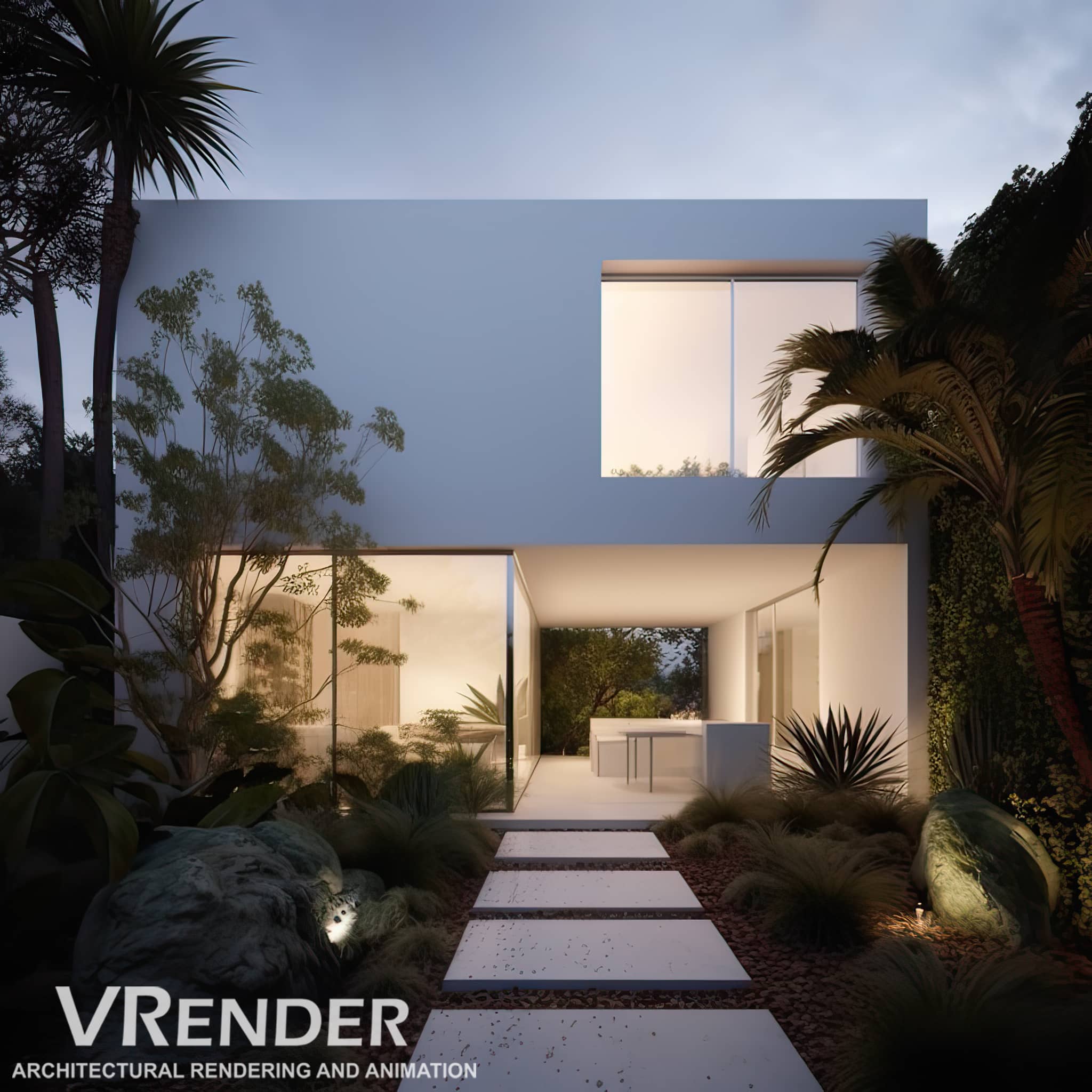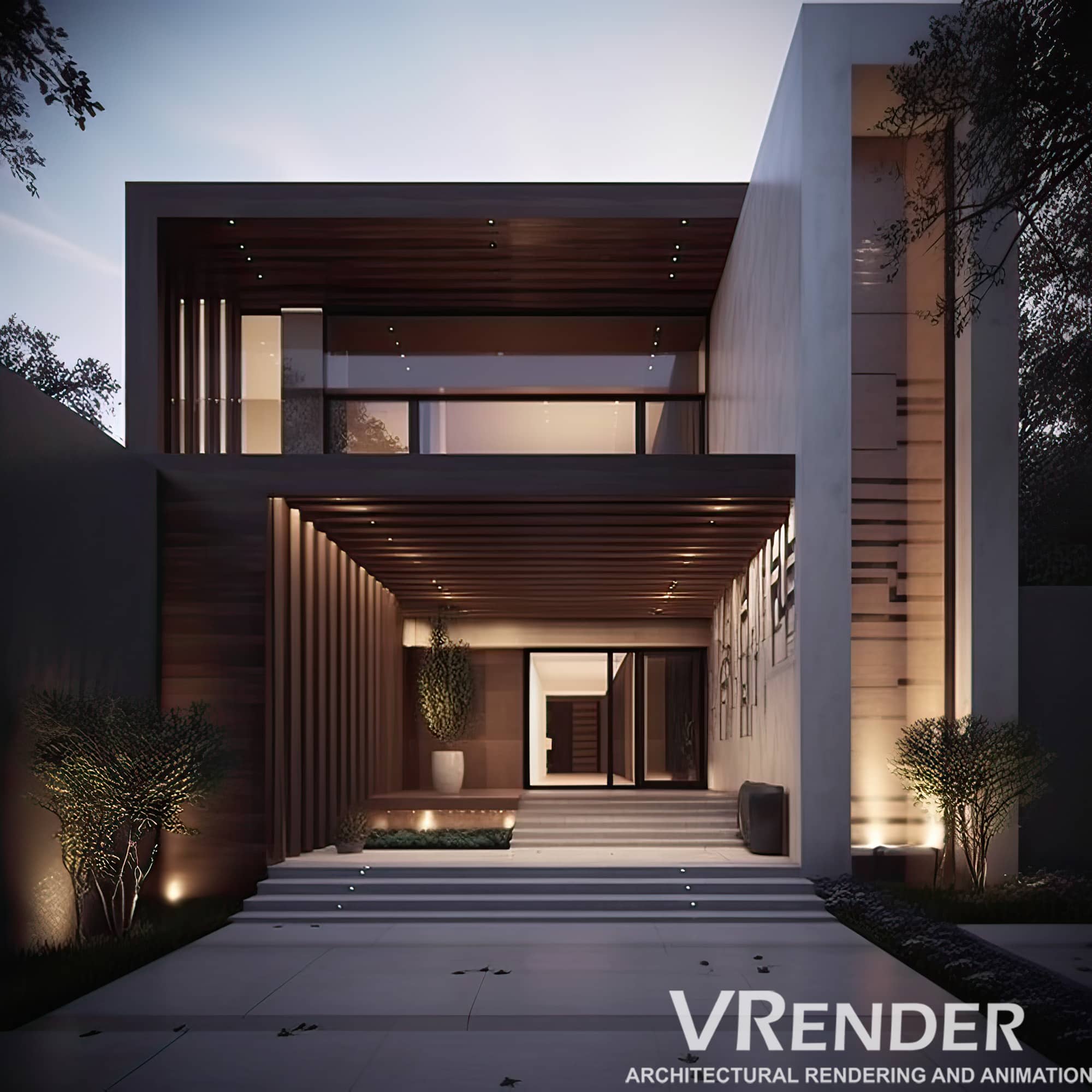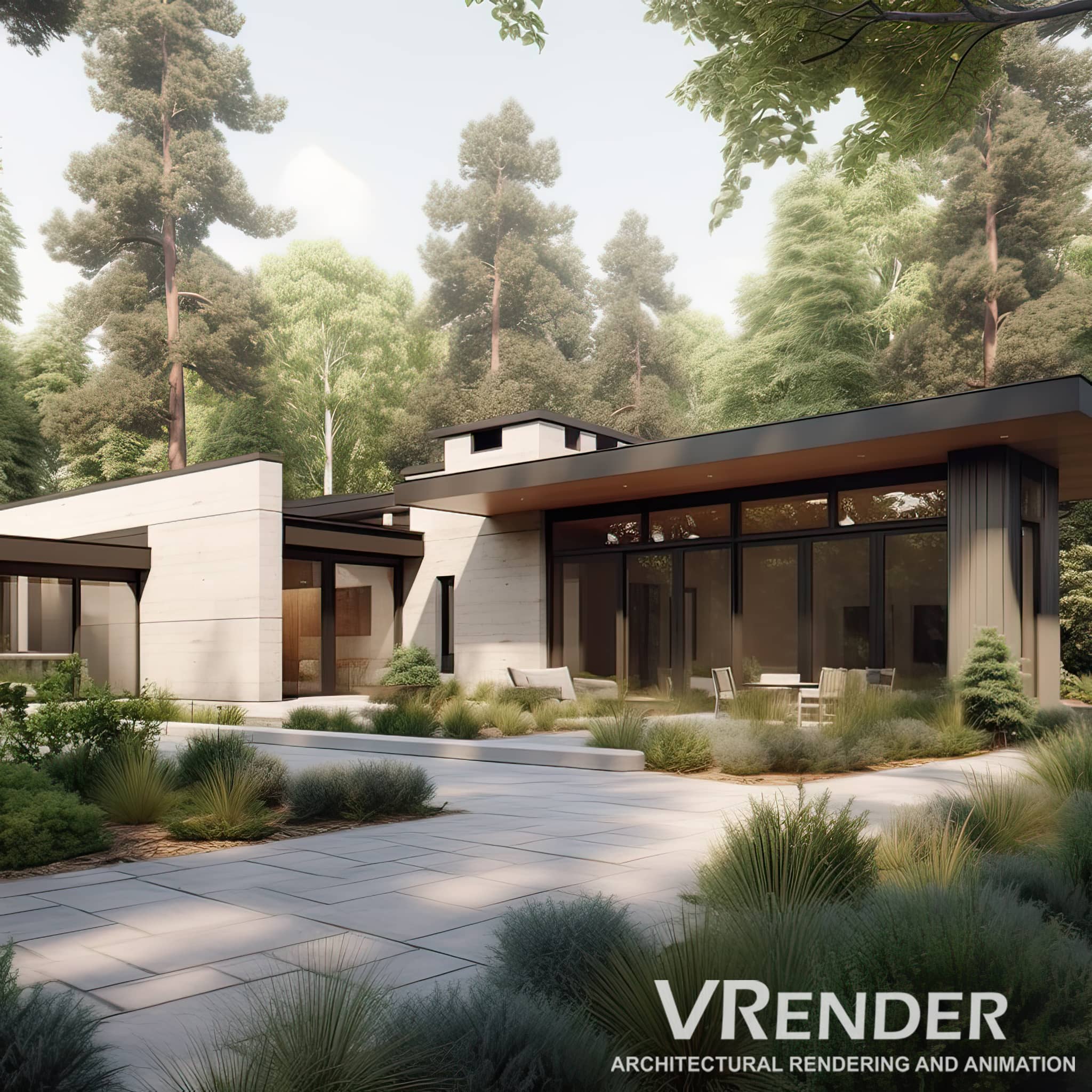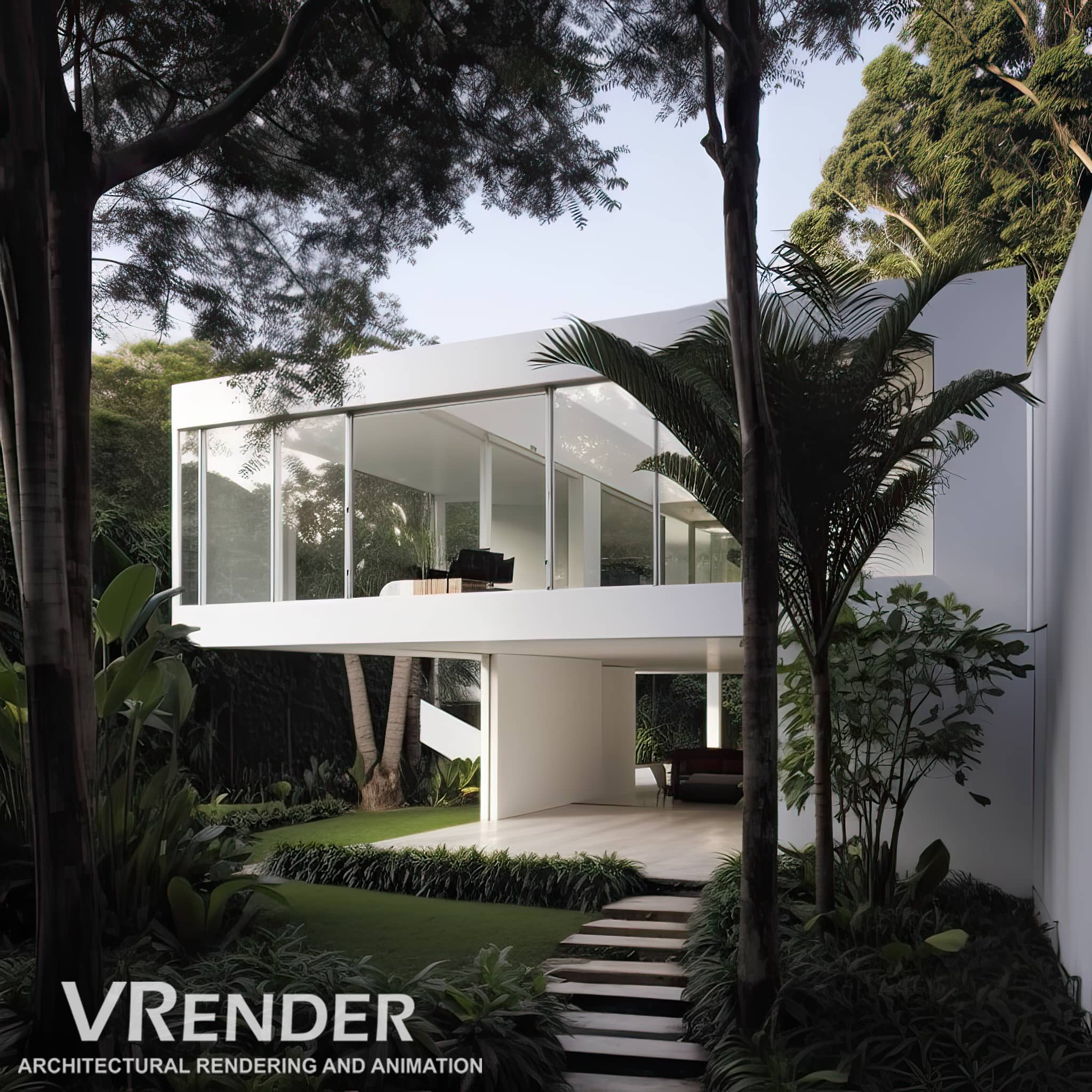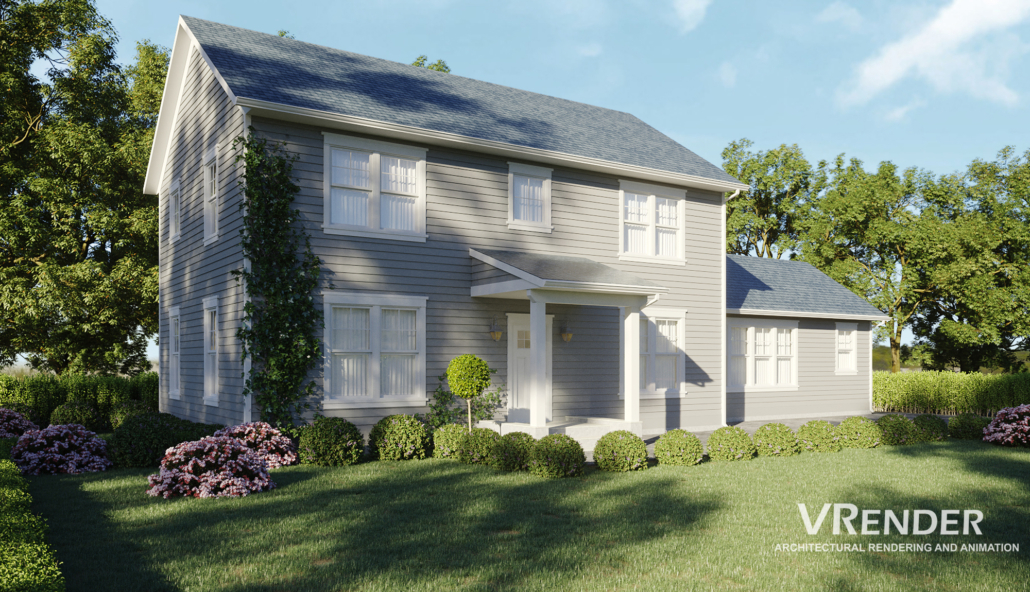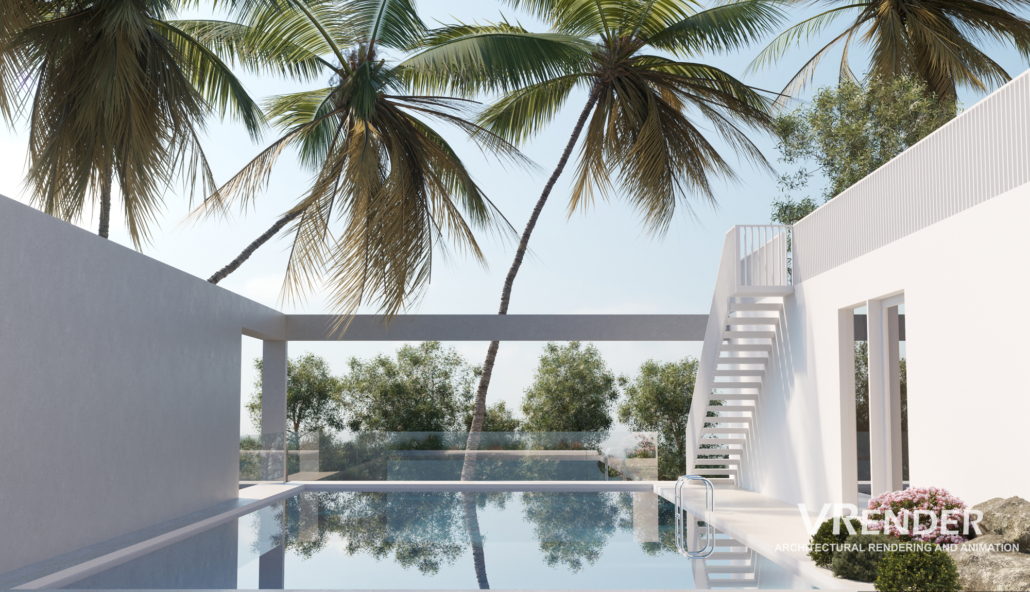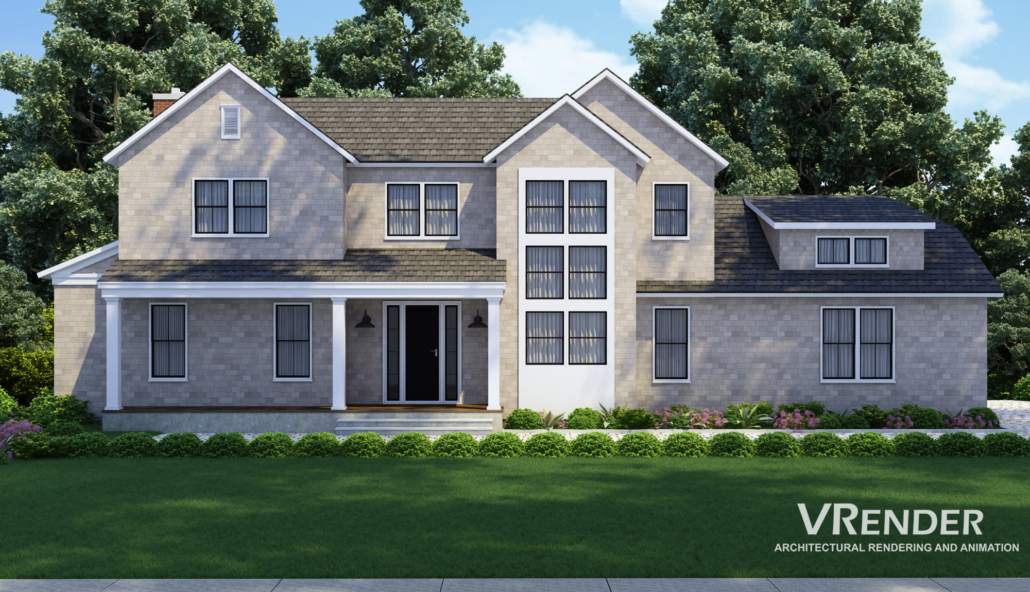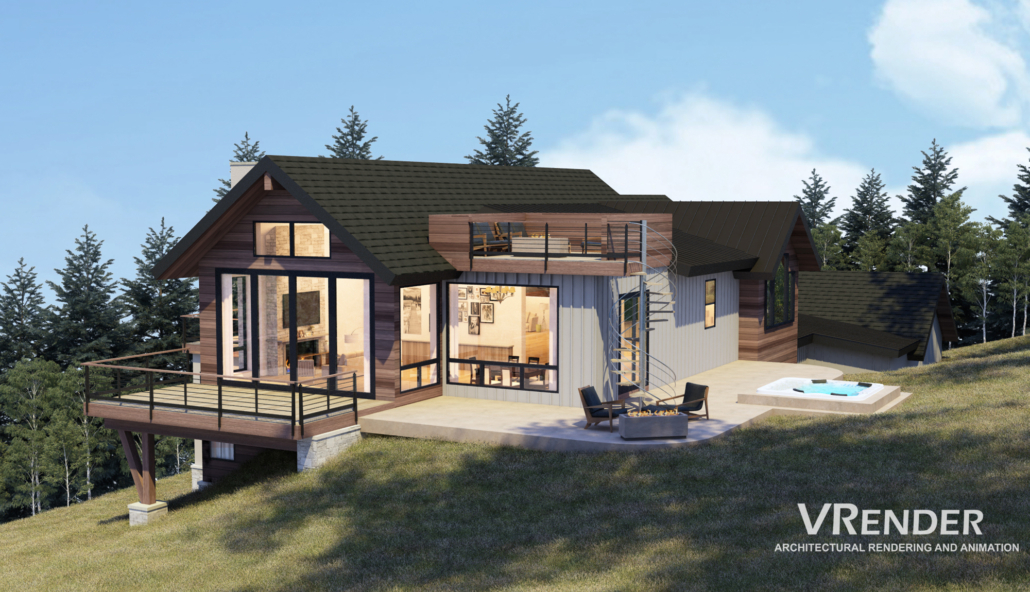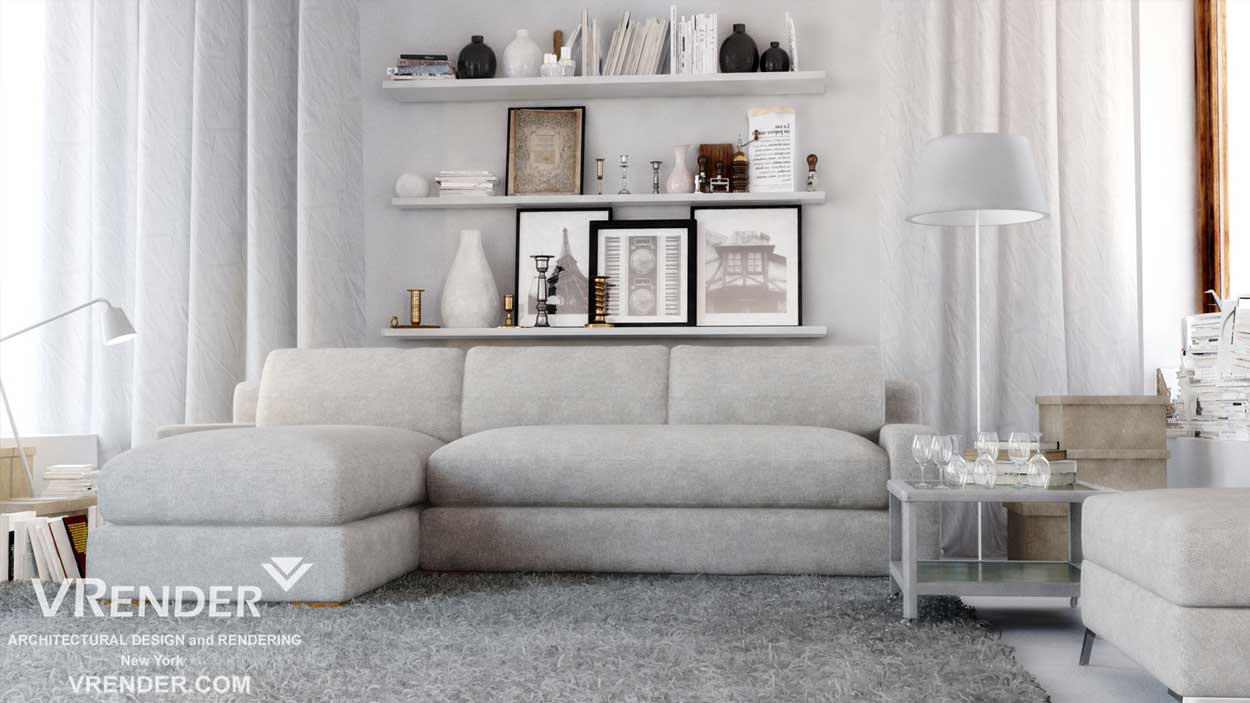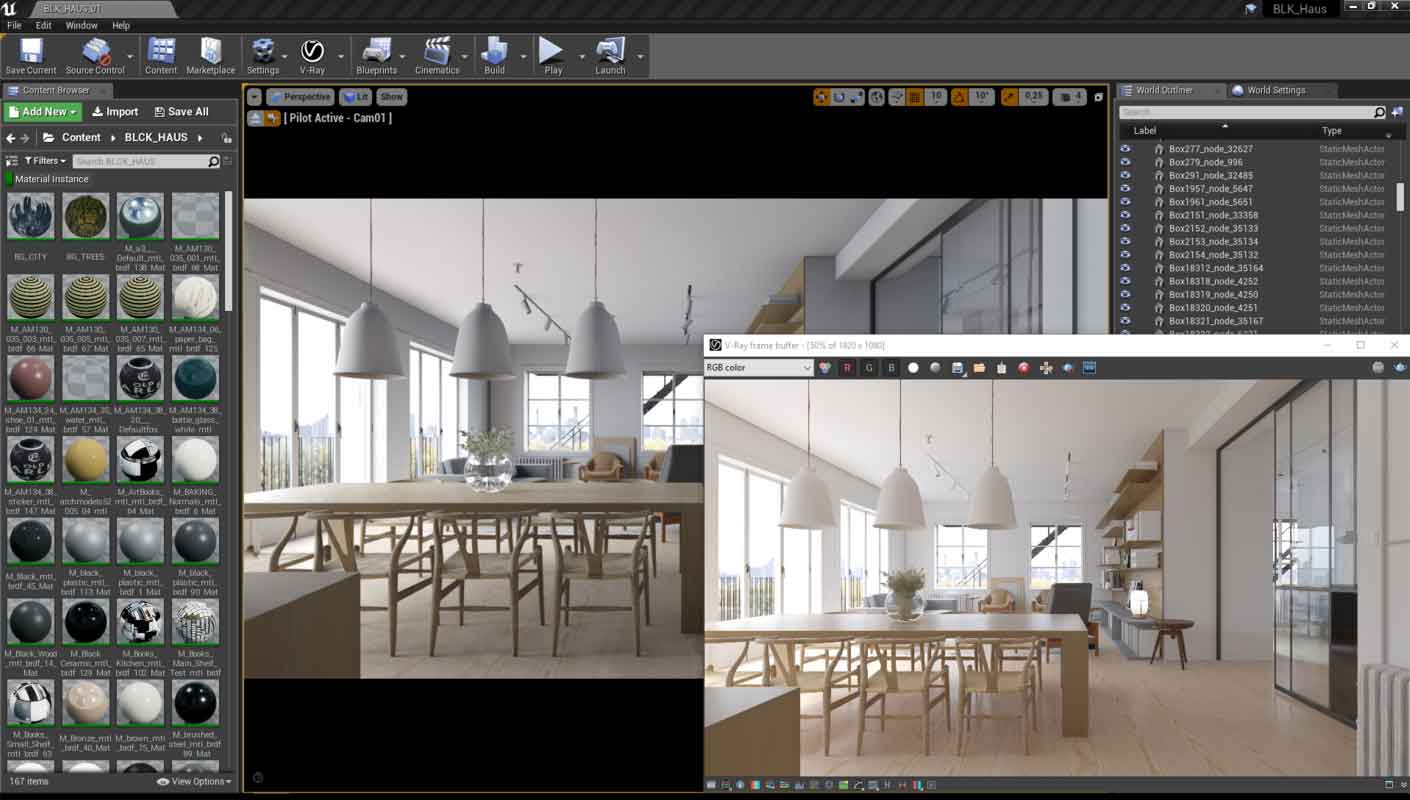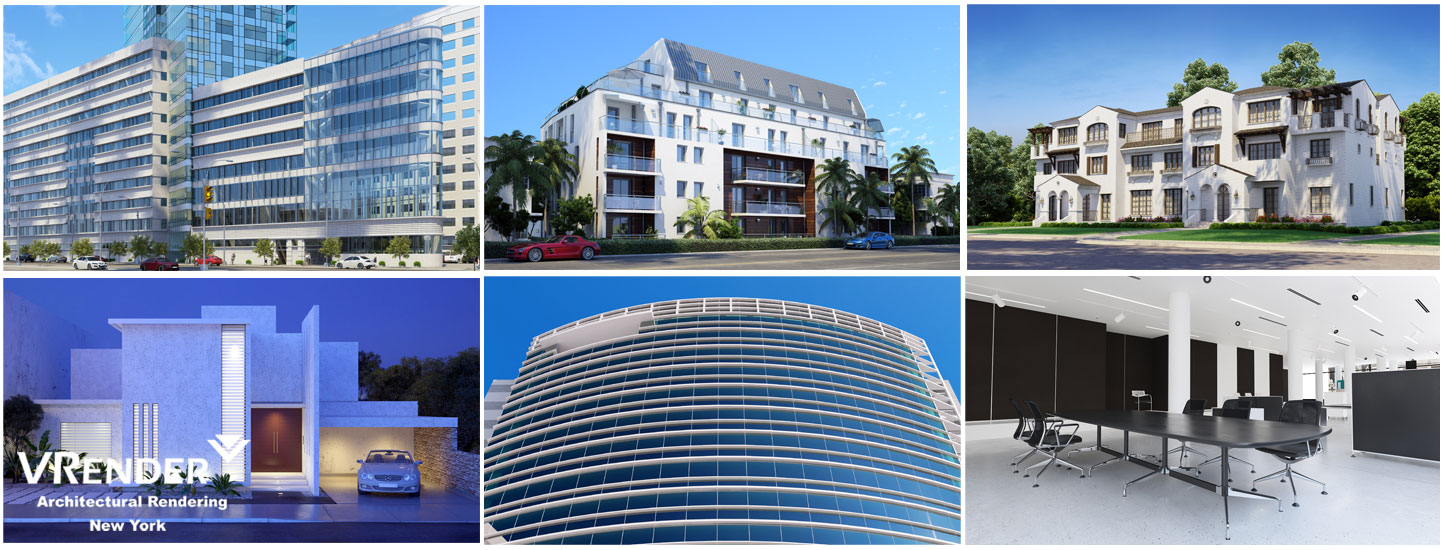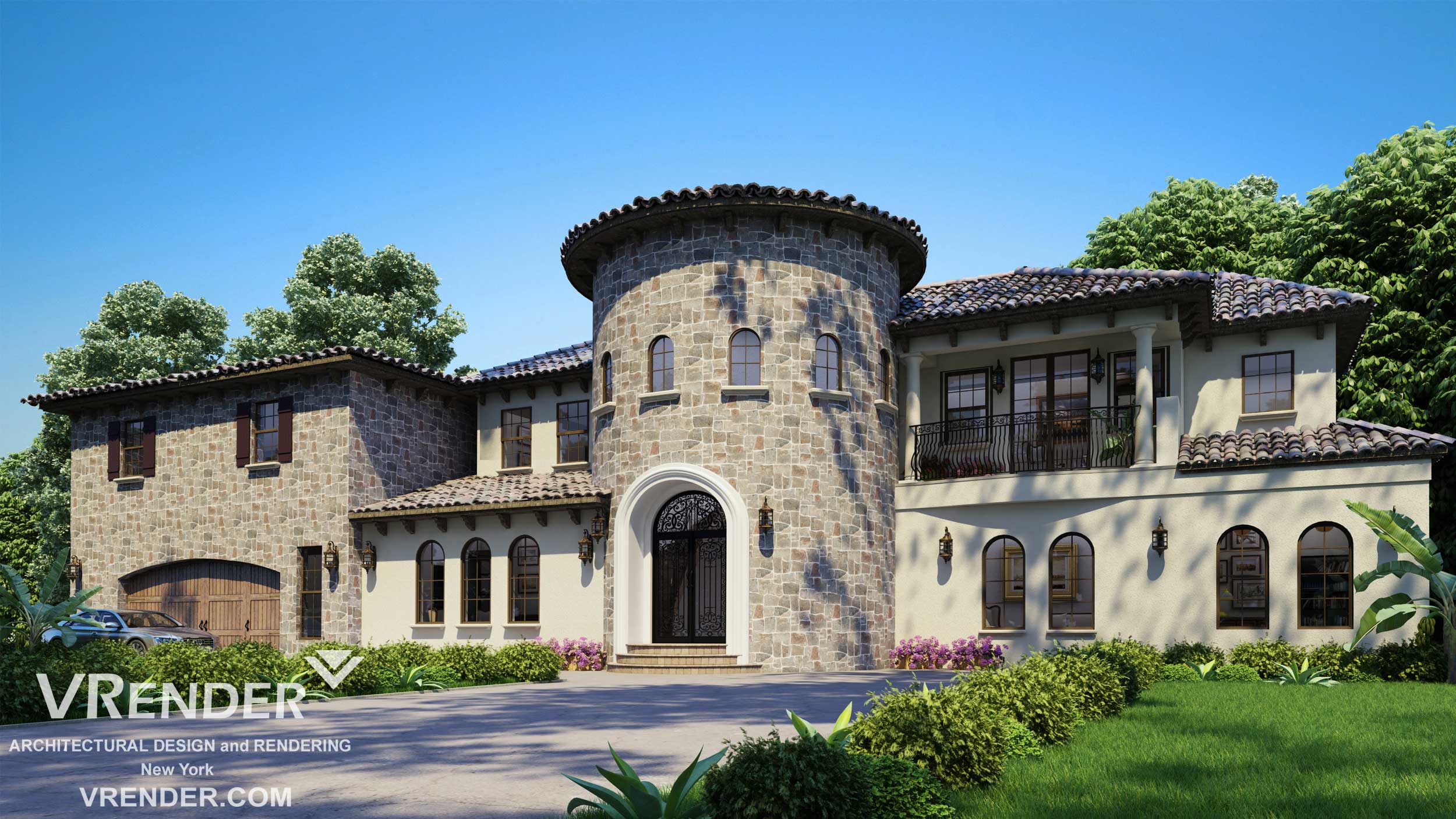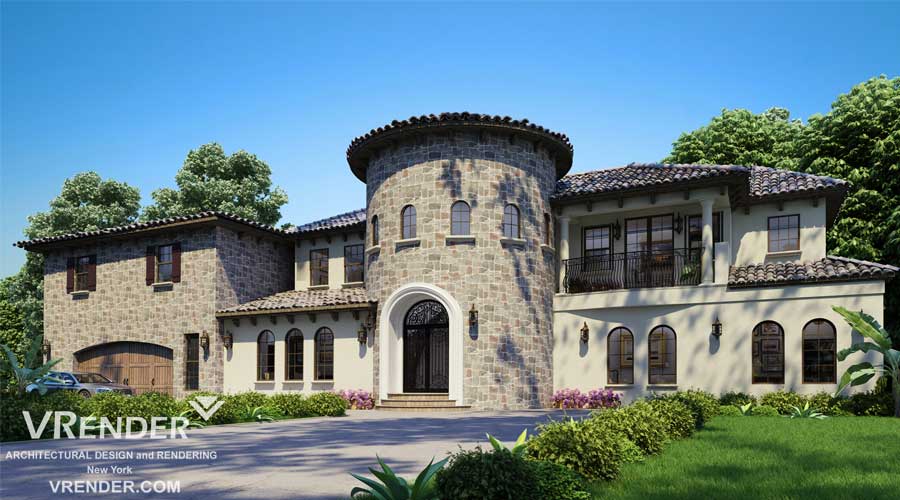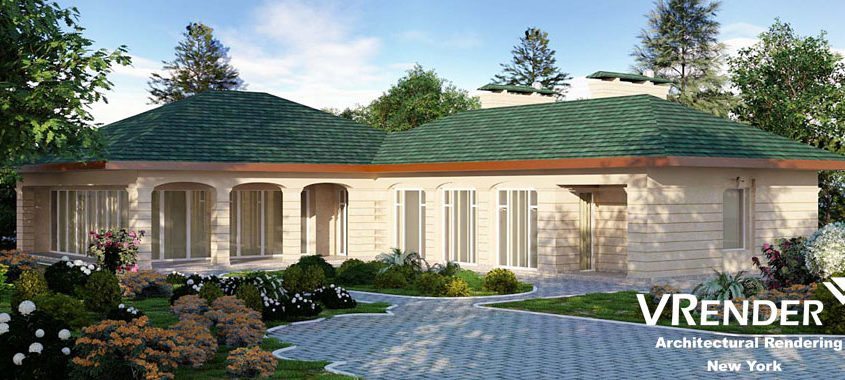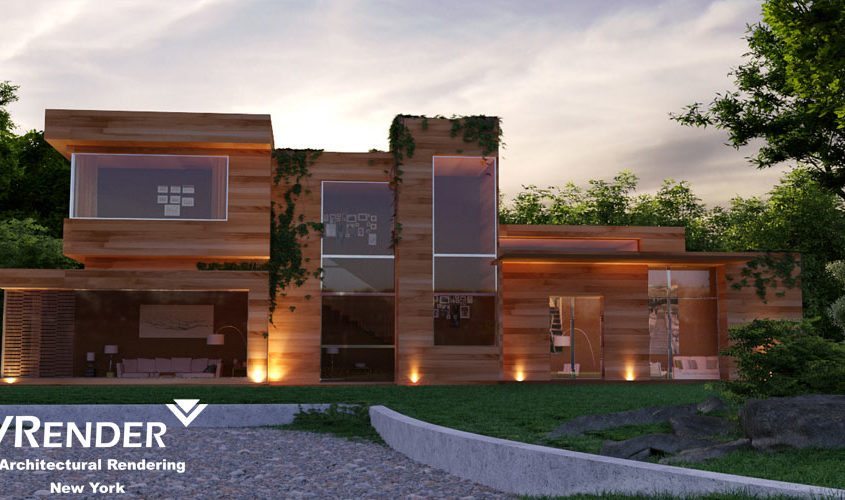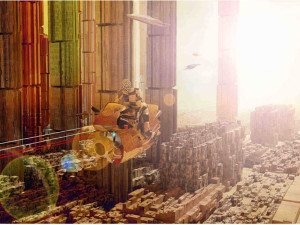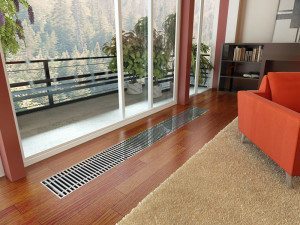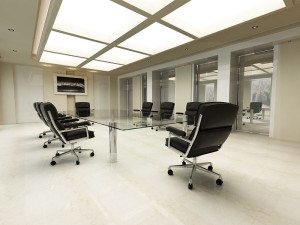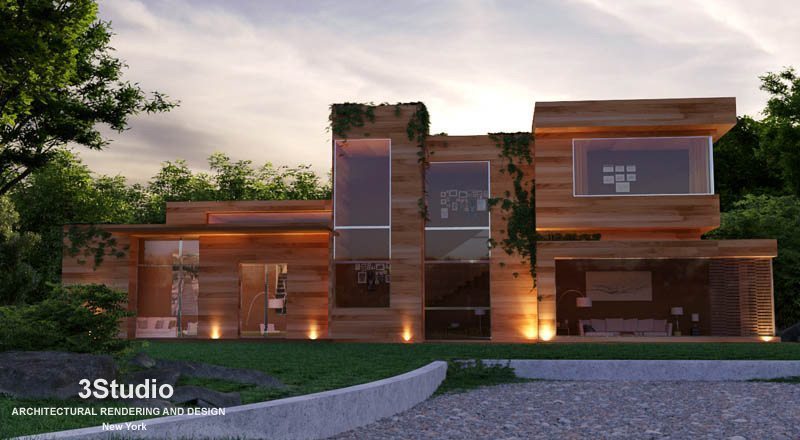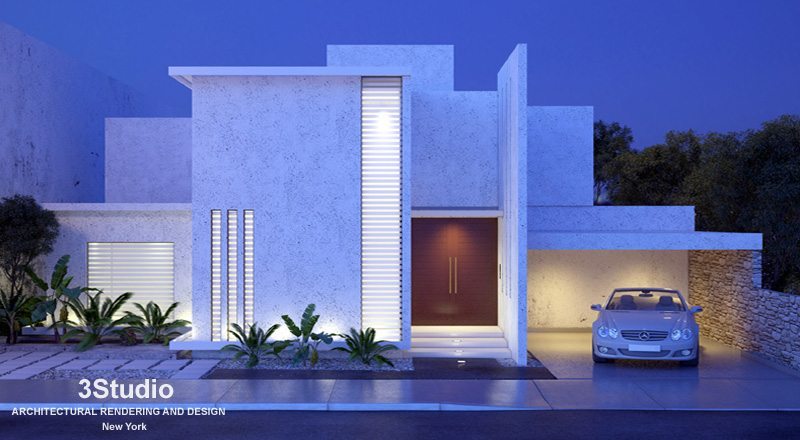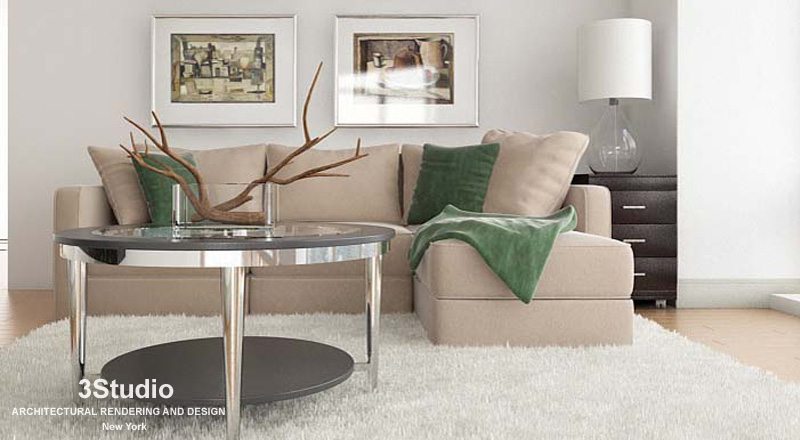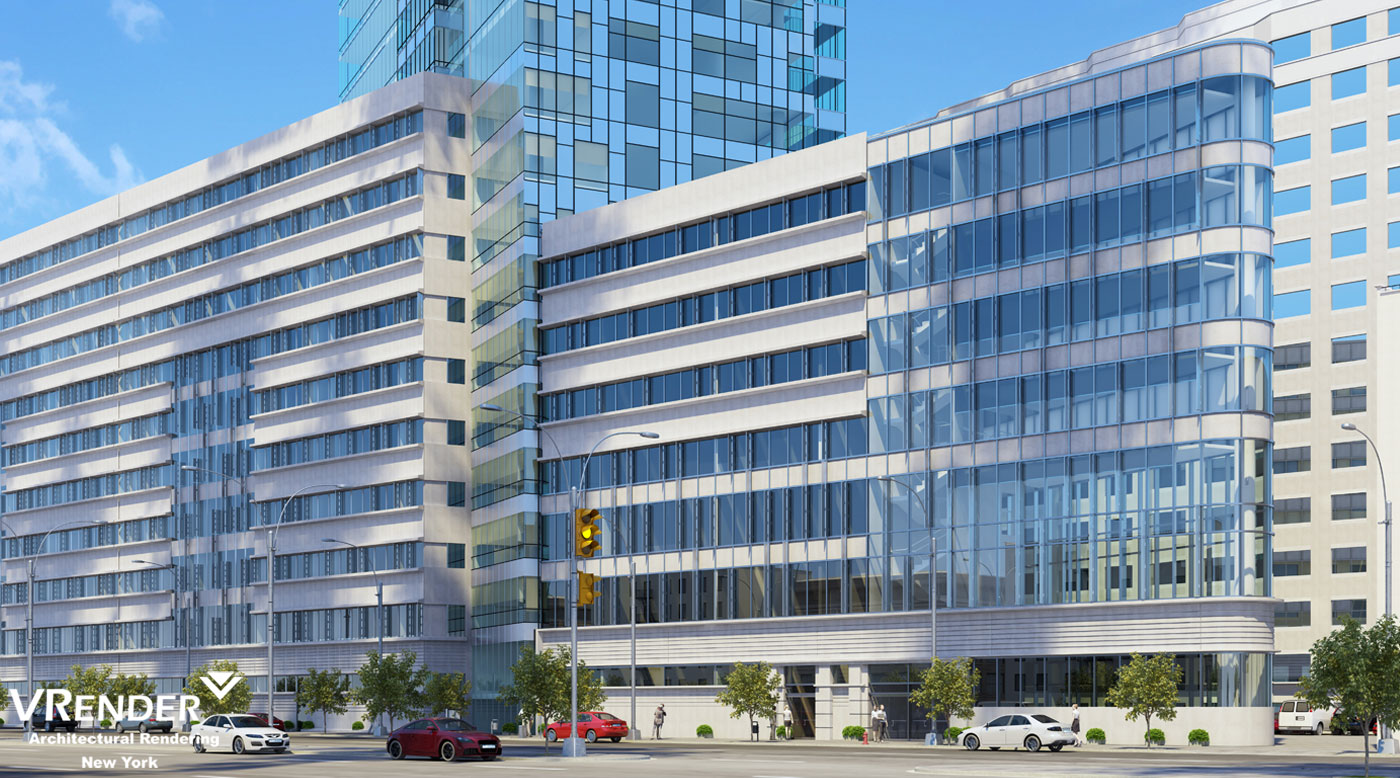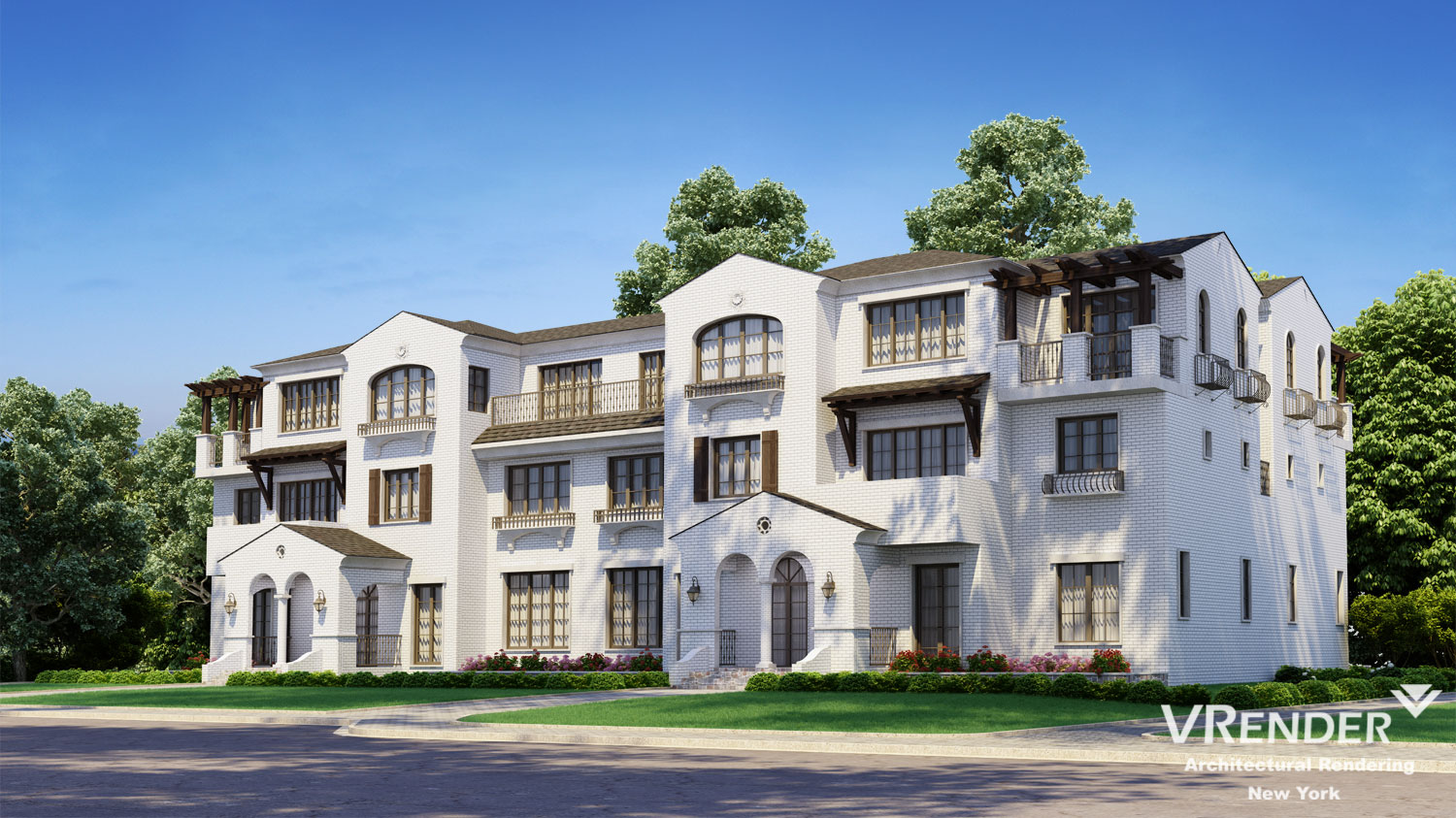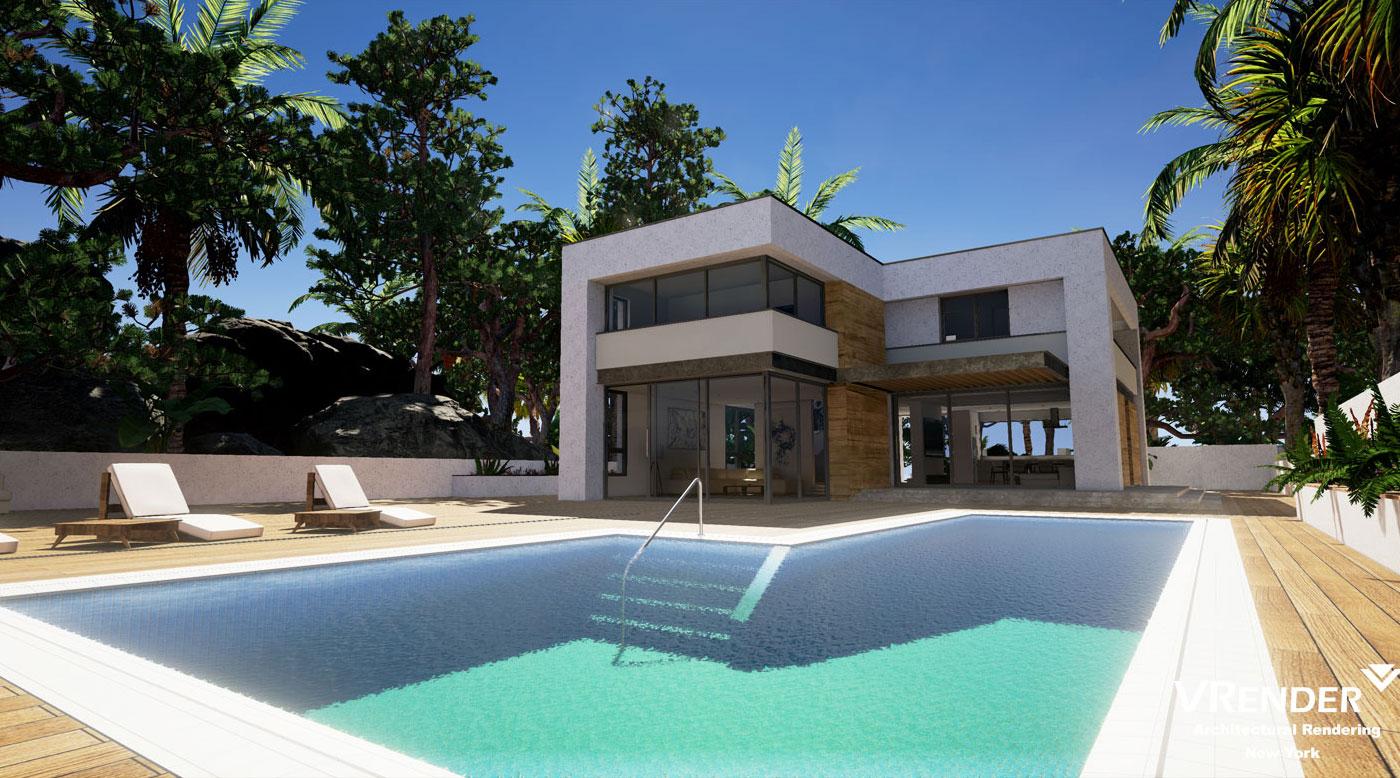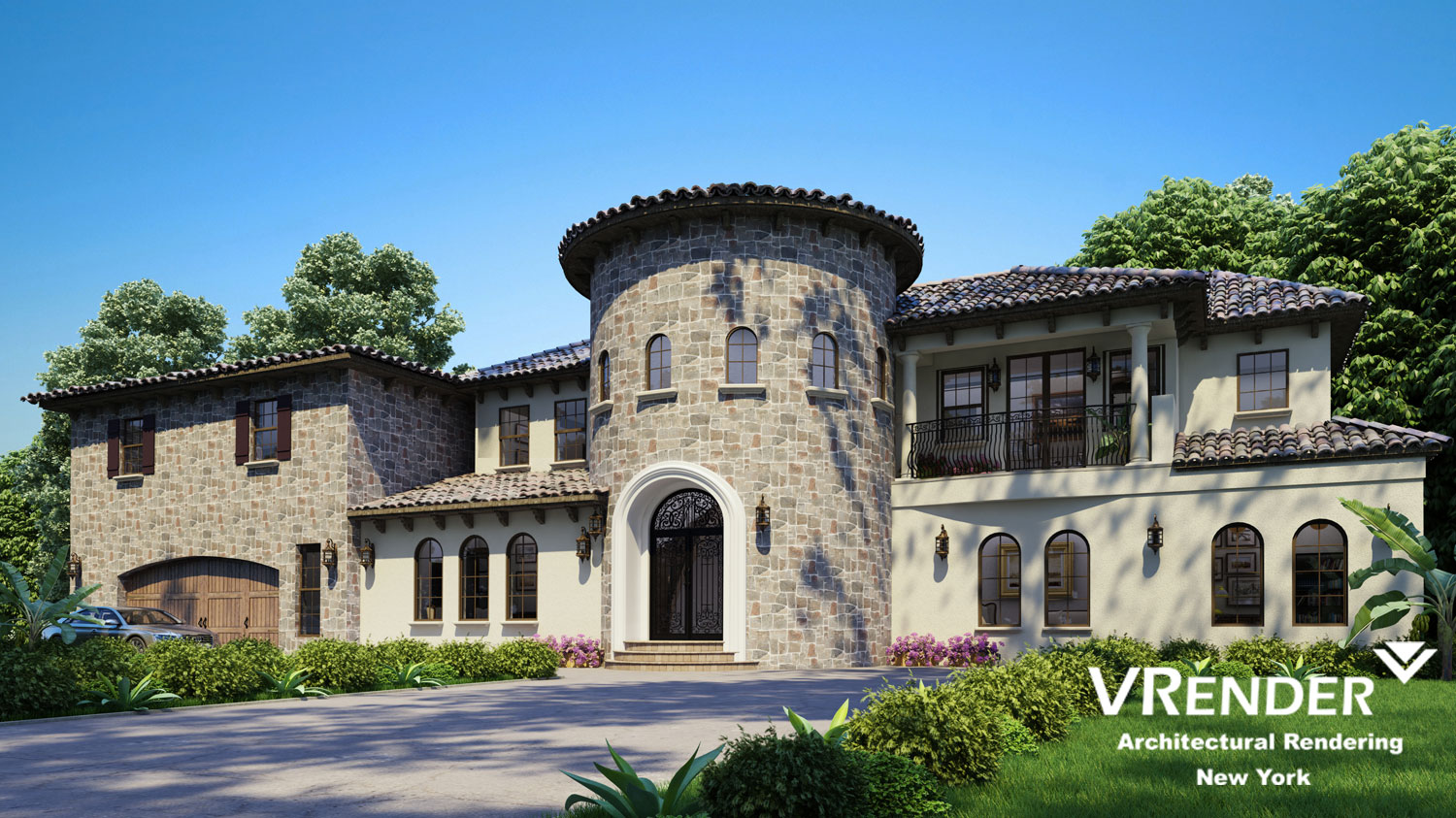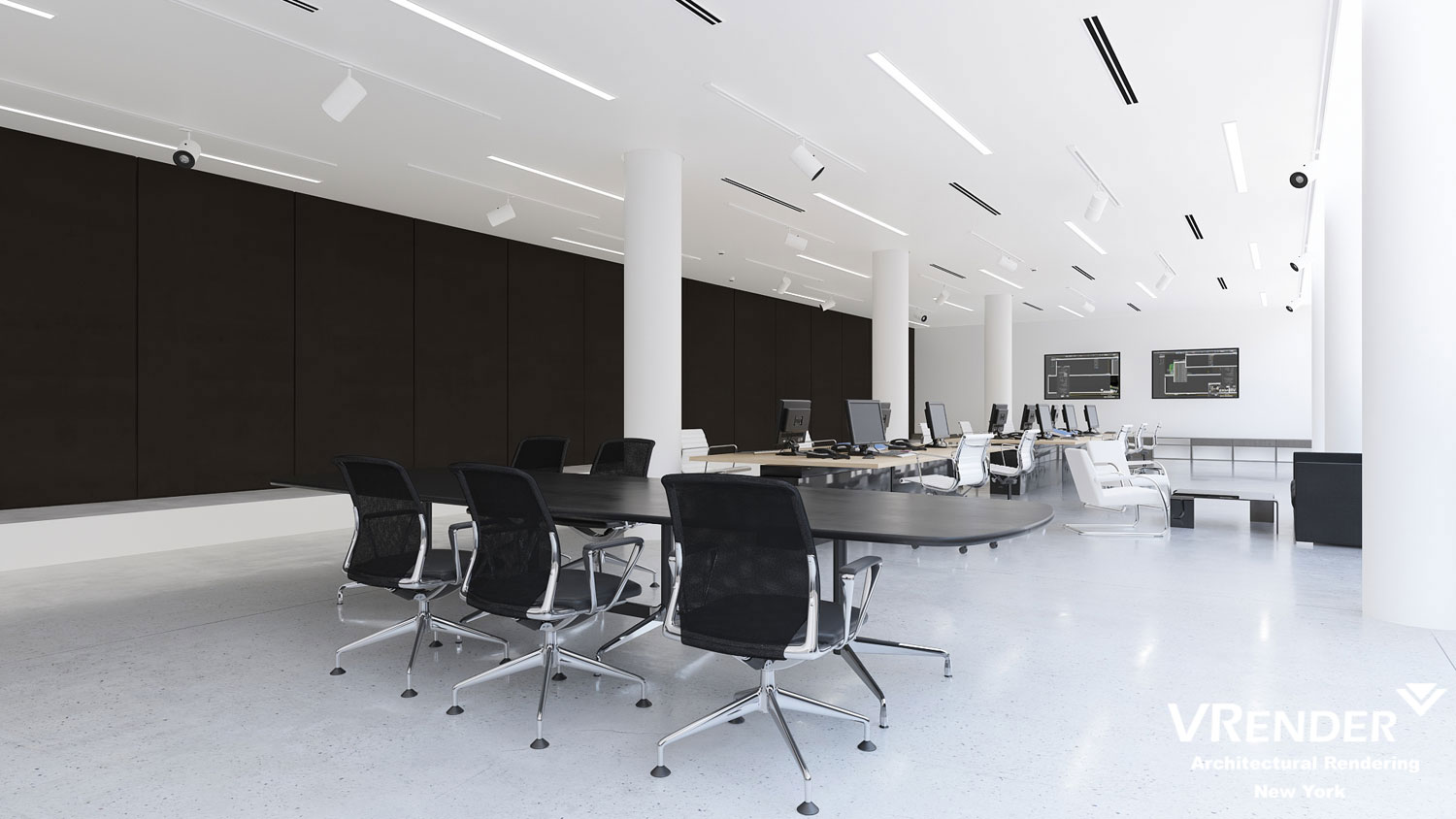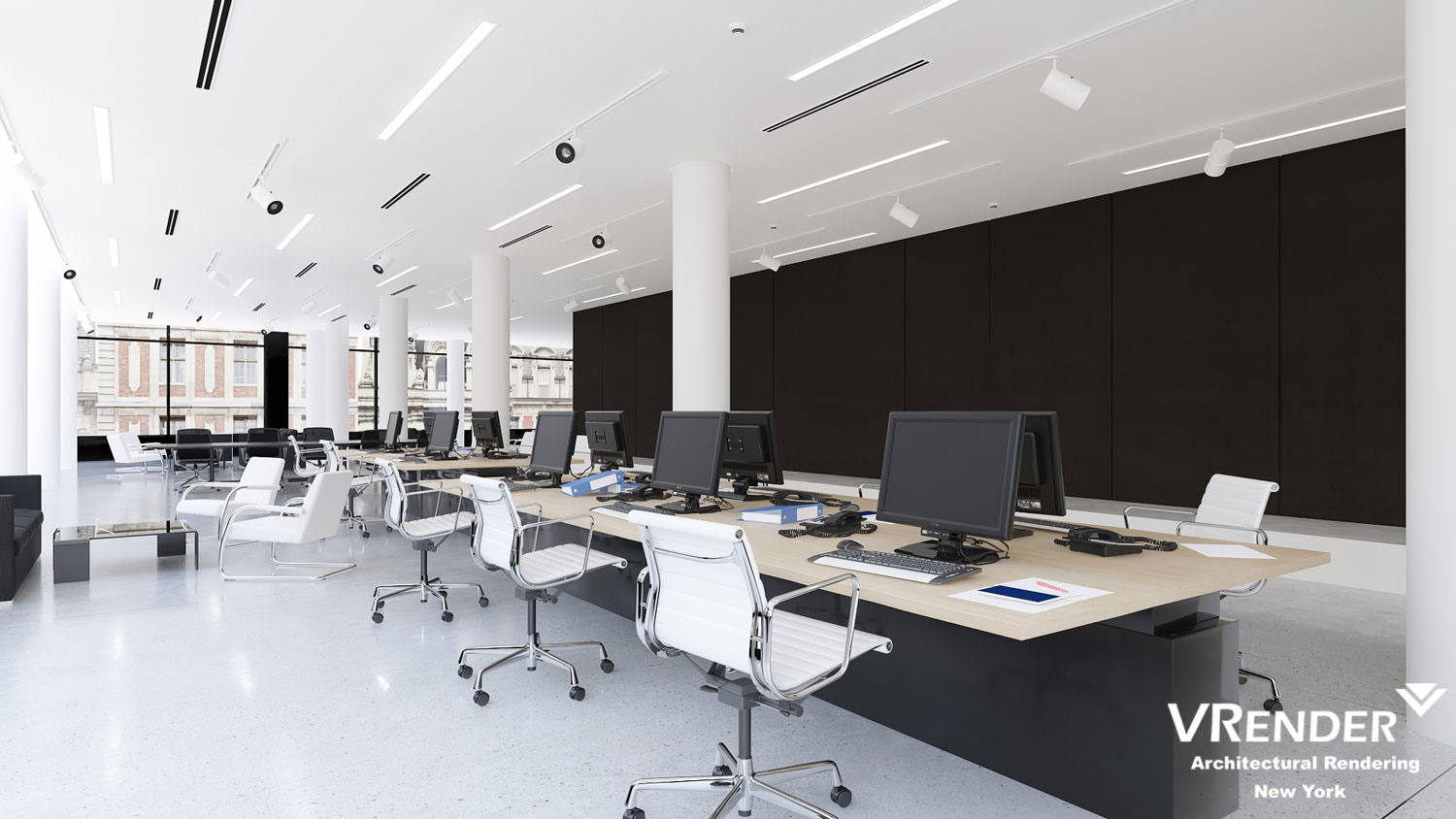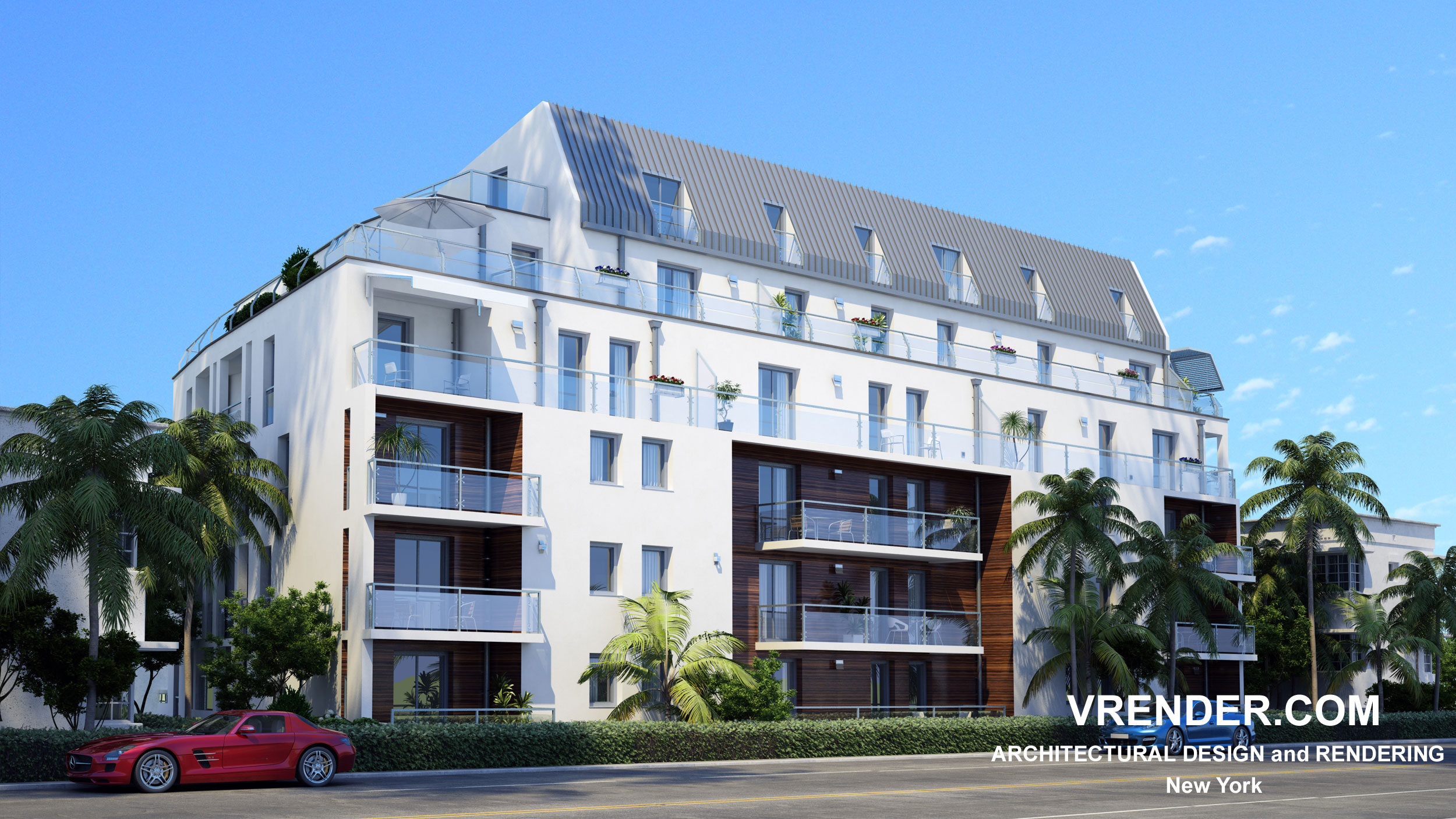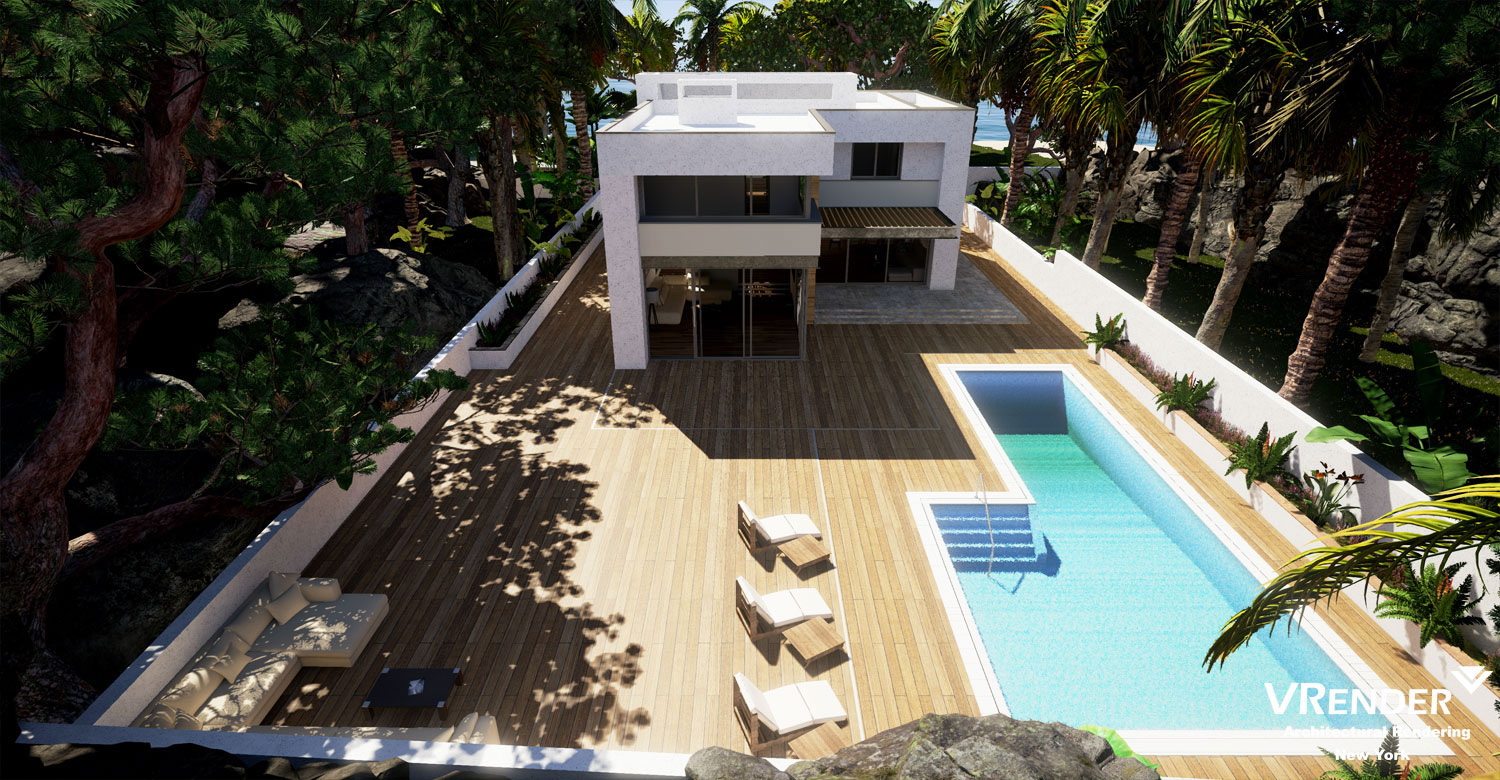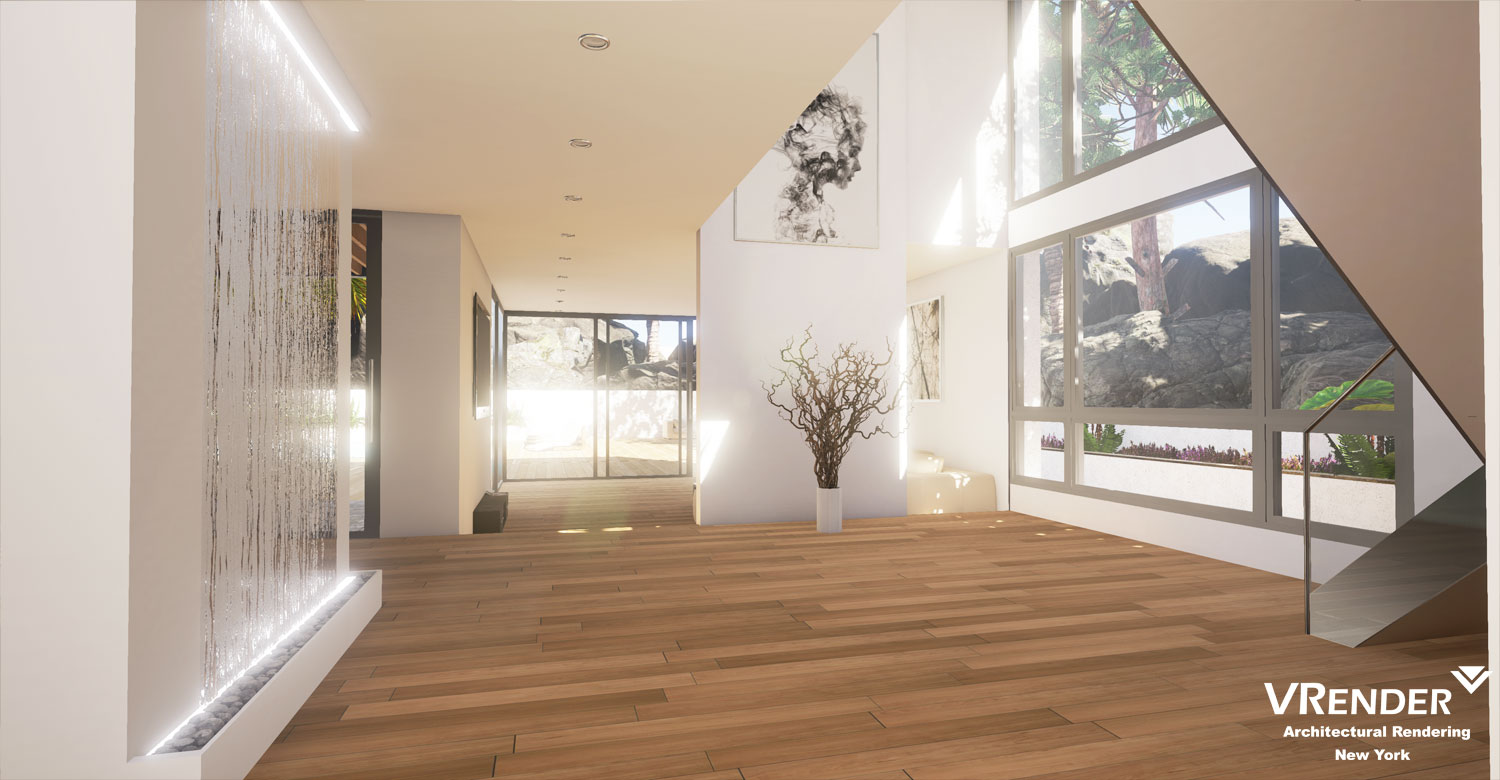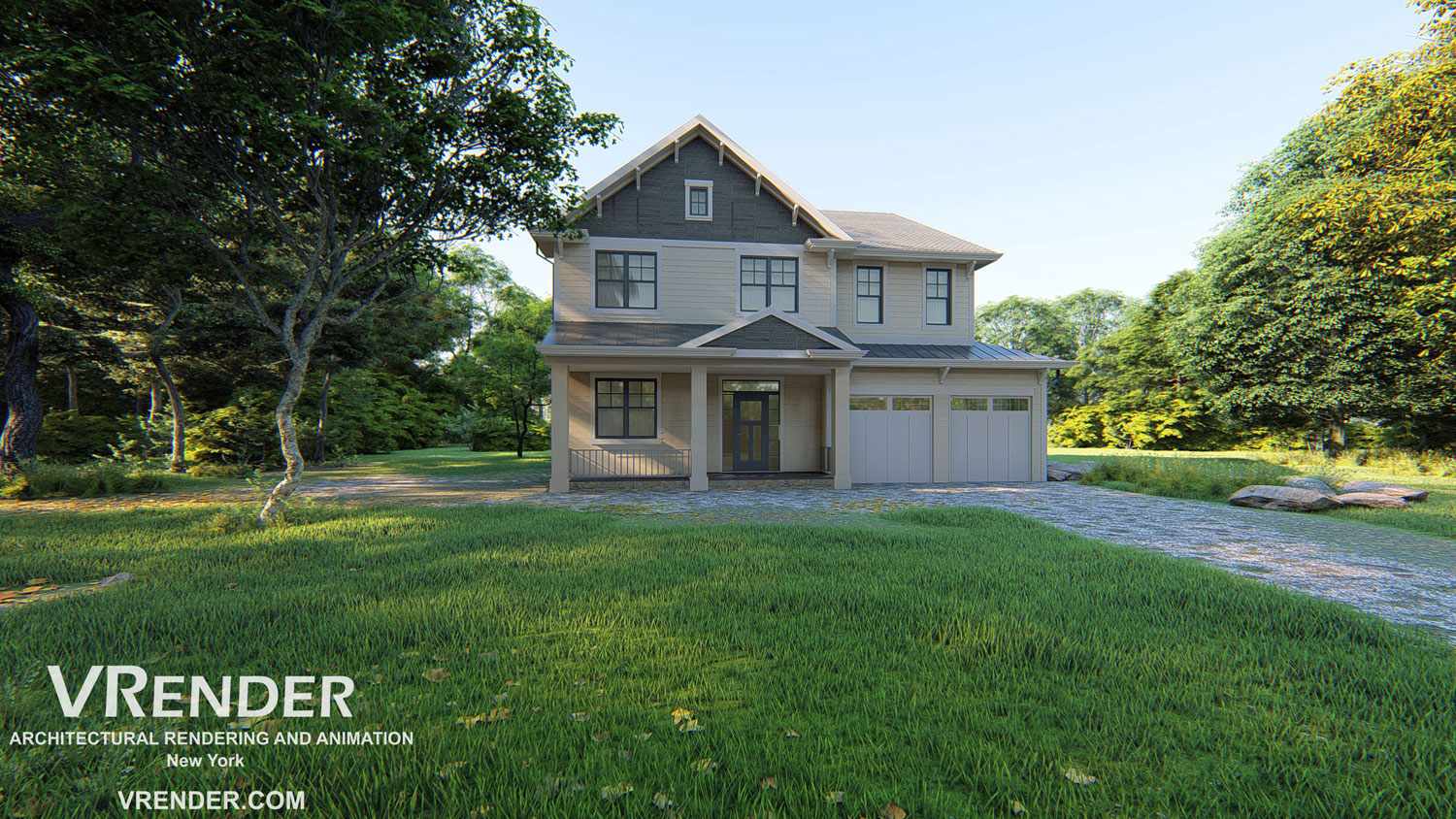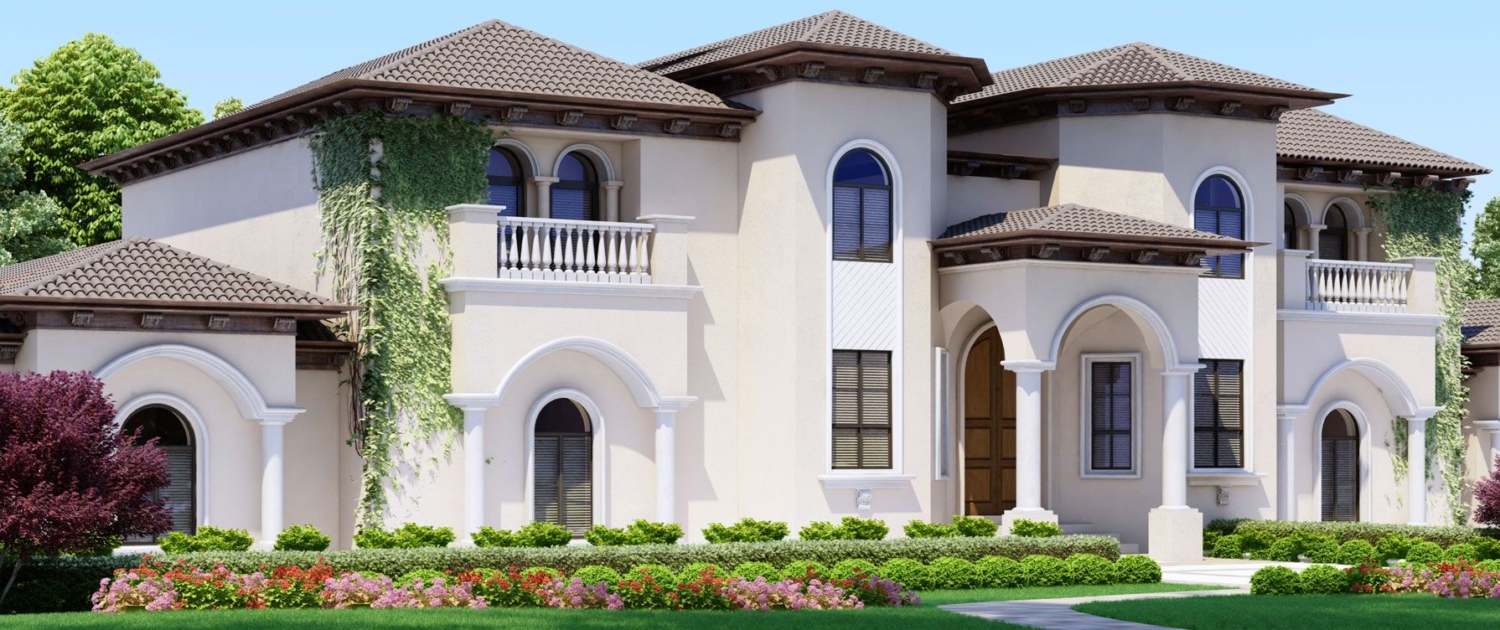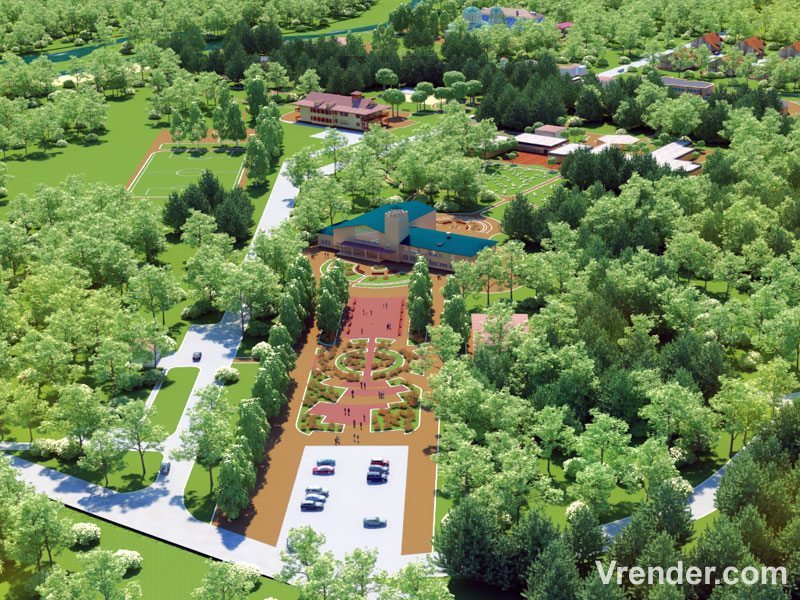Architectural rendering, sometimes referred to as architectural visualization, is the process of creating two-dimensional images or animations showing the attributes of a proposed architectural design. Architectural rendering is used by architects for various purposes:
1. Visualization: Before a building is constructed, architects need a way to show their clients how the design will look in real life. Rendering helps clients visualize the project and allows architects to demonstrate design concepts and make adjustments before construction begins.
2. Presentations: High-quality renders are used for presentations to clients, and investors, or for public approvals. They need to be clear, appealing, and realistic to effectively communicate the design intent.
3. Marketing: Developers and real estate companies often use architectural renderings to market residential or commercial spaces before they are built. They serve as a powerful tool for pre-selling or leasing property.
4. Design Analysis: Renders allow architects to study how light plays with the building surfaces, how the materials look in different lighting conditions, and how the structure blends with the site context. It can prompt design modifications when something doesn’t work as expected.
5. Permits and Zoning: For legal certification, councils often require visualizations to understand the impact of the new structure on the surrounding environment.
Architectural rendering can be done in many ways:
– Hand-drawn sketches: Traditionally, architects have used sketches to convey an artistic impression of the final product. While not as common today, hand rendering still has a place in the early stages of design.
– 3D Modeling and Rendering Software: Software such as SketchUp, AutoCAD, Revit, 3ds Max, Maya, and Rhino are widely used today. These tools allow architects to create detailed 3D models of their designs which can then be rendered with realistic textures, lighting, and shading.
– Photorealistic Rendering: This technique attempts to create an image as realistic as a photograph. This often involves complex rendering software that can simulate light, materials, and camera effects.
– Virtual Reality (VR): VR allows clients and stakeholders to experience the space in a much more immersive way than traditional renders. Users can “walk” through the interior and exterior of the building and get a sense of the scale and spatial relationships.
– **Augmented Reality (AR)**: AR overlays digital content onto the real world and can be used to visualize buildings in situ through smart devices.
– **Animations and Walkthroughs**: These are video presentations that make it possible to give a tour of the design, showing different angles and features as if one is moving inside or around the building.
Architects and firms may either have in-house specialists for rendering or they may outsource this task to specialized companies. The advancement in technology has also ushered in AI-based rendering tools which can further streamline and speed up this process.
For architects, proficiency in creating or at least understanding architectural rendering is important as it directly impacts client feedback, project approvals, and ultimately, the success of their designs.
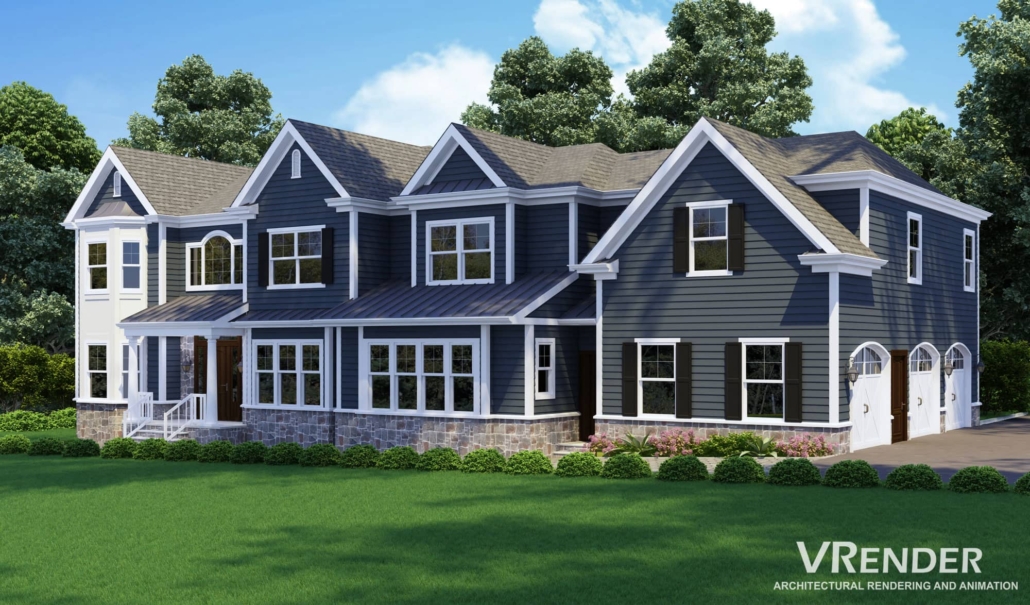
Working on a project architects confront a question: «In what way they can profitably present it to a customer?».
Drawings, sketches, or planning documentation are everything that usually helps architects to work comfortably and easily aren’t good enough for customers because they are very far from the cobwebs of the architect’s work.
The most profitable and intelligible way to present the project is 3D rendering which helps architects:
- to free time for creative work;
- to bolster your profit margins;
- to guarantee a competitive position.
Call us or write to [email protected], in order to book the rendering of your project and to know all the details about all work advantages with our architectural visualization studio and about different variants of effective architectural object presentation.
Robert Brice (a founder of the “AECIS Interiors” studio) tells about the experience of cooperating with our studio:
Benefits of using qualitative architectural rendering
An opportunity to demonstrate a photorealistic image of a project and make a simpler way of coordination. Sometimes it is very difficult to explain to a customer the concept of the project.
It is very difficult to do it orally, but many transitional stages, such as the first sketches or conceptual drawings with a pencil can be sufficient for you may not be intelligent to a customer, so all coordination work and explanations will drag out a business.
The project of reconstruction: current situation and the first sketches (Do you think a customer will understand the idea? Fat chance).
An ideal decision for a customer will be to see a three-dimensional image of his own object.
Renovation project rendering, so the customer understands an architectural concept and the project will be concurred and proved:
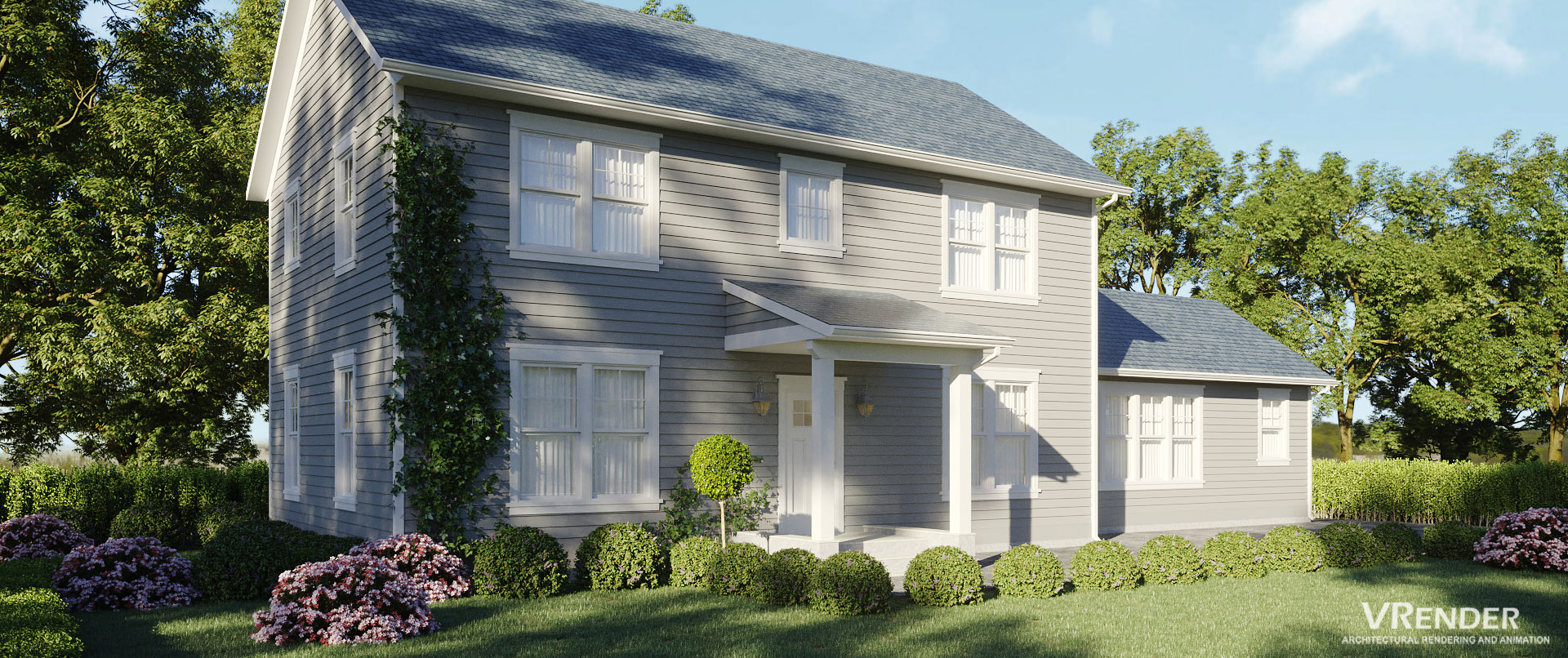
Furthermore, a customer has business partners, colleagues, friends, and family whom he wishes to consult with in order to determine conclusively. But for them, it is too difficult to puzzle out project documentation and to understand architectural and planning concepts. Even more, the reason is that a client and not you will present the project. Here again, rendering will be a finished, nice, and intelligible picture, so it is a good way to form a favorable opinion about the project among people whom a client is accustomed to advise. Very often, he put a rendering of his future house or shop on the table or demonstrates it on his iPhone.
And in the case of objects presentation at public hearings or before different planning commissions rendering is practically the only way of demonstration.
A possibility to convince a client of the need to order a project
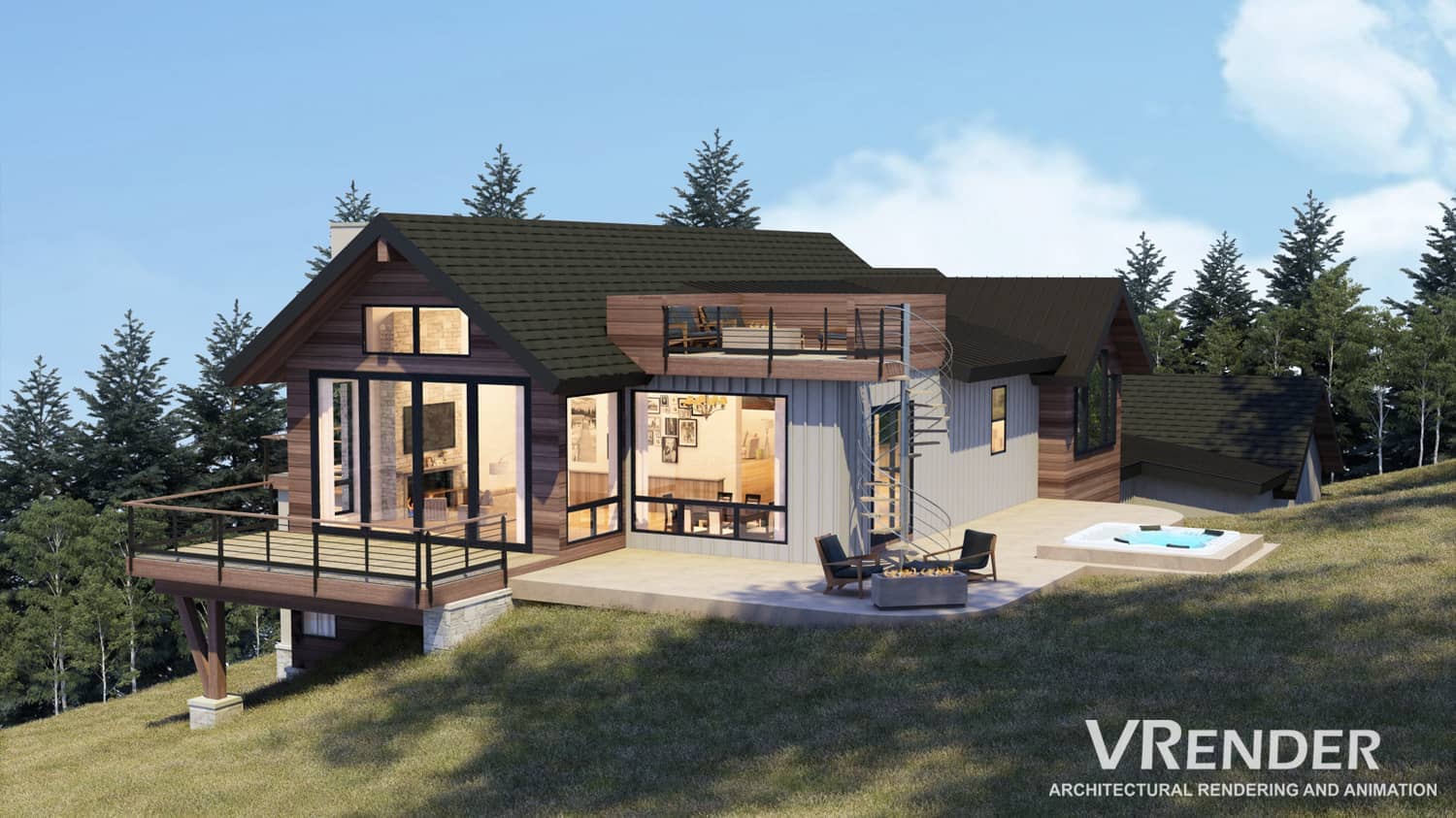
Is your customer thinking, or hesitating about the need for a project or his manager of the work can build everything himself?
The main fact is to «give a kick» to a customer and motivate him to order the complete outfit of the project documentation, spending the minimum amount of time and money. Rendering is the best way to solve such a problem because it is enough to use only several sketches and reference images for the creation of a nice marketing picture.
A reference image and alternate layout (for an experienced architect it is a simple, quick, and solvable problem):
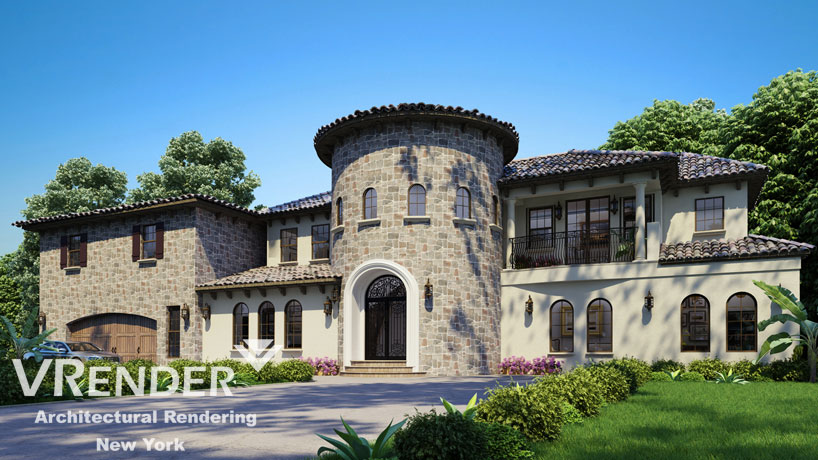
Consequently, you can demonstrate the image of a client’s future stairs even before the stage of the initial design, finally, convince him in your professional manner, and show the necessity of further cooperation.

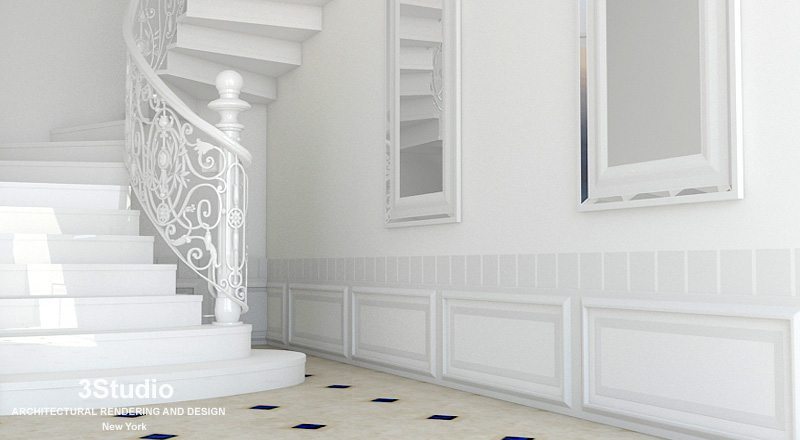
Rendering – the project is well-designed and finished
A possibility to get an additional income
Rendering for an architect is cheaper than for an end customer.
During rendering takes place, with the cooperation of both the architect and visualizer, corrections are proposed, angles are approved, and technical assignment is coordinated. Rather than anywhere else at this cooperation, an additional value of a rendering is born. Another way of putting it is that rendering that has been ordered at our studio is selling to the end customer at a higher price.
All the more reason is that by means of a qualitative rendering worth of the project is rising in customers’ eyes.
A possibility to save some time for creative work and greenfield projects
Once in a way, an architect has to follow all customers’ tough requirements. So, practically all architects have kitschy projects – they are simple and banal architecturally, but nevertheless very attractive to a client.
Such a routine for perfect architects is very burdensome, but all the same moneymaker especially if the question is about facade stylization of already-existing objects.
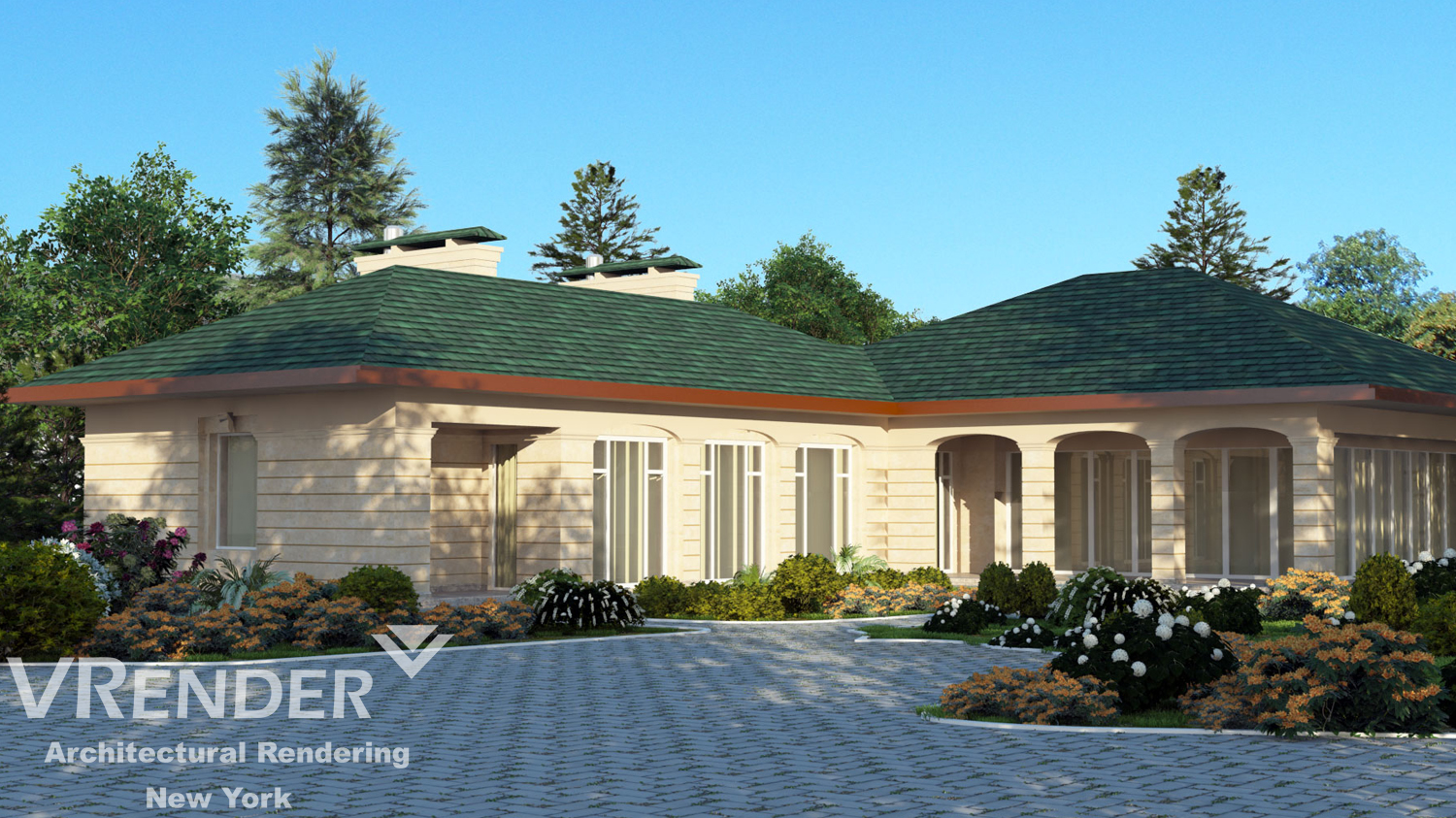
Specified planning documentation, drawings, or detailed sketches aren’t needed to be used.
Rendering helps to solve such a problem: you describe the concept of the project and prepare schematic sketches (of course, a client doesn’t need them, but they are enough for the beginning of the rendering work). In a similar fashion, it is possible to visualize only facades apart from foreground images that in some cases allow stepping away from drawings and saving your time and money.
Additional confidence that in the course of projection and material, the selection was not refused admittance.
Rendering reproduces a play of light and shadow that cannot be represented in any other way. Many materials change their color and reflective power depending on optic angle and lightning so this property is taken into account during materials selection.
Also, rendering allows watch different variants of color layouts and choose the best one.
Rendering is a sort of control examination of the whole project. Integrating all possible amendments is cheaper at the design stage than in the process of construction.
A project that has been already designed and visualized can be encased in a portfolio and demonstrated to new customers without waiting until the end of construction.
Object construction is delayed very often or even doesn’t begin sometimes. Nevertheless, the project is finished and examined in detail, so that a wish appears to show it to new customers, colleagues, or put up for tender.
And since our rendering has been taken for a photograph, you can easily replace the photo of a completed object. It will speed up the architect’s portfolio replenishment and spend the minimum of time between the project’s finish and its beginning, so it brings glory to an architect and his studio.
Competitive position before other architects, because they don’t have a good rendering.
Unfortunately, for us (visualizers) and fortunately for you (architects), not many architects consider a qualitative 3D visualization as a necessity.
Some architects:
• prefer to refuse from rendering at all forgetting about its demonstrativeness for a customer;
• economize greatly on rendering without paying attention to its quality and doing everything only just to check the box, because «everybody does the same».
Such an approach is appropriated only for some architectural circles. But if to take into consideration business engineering, architecture, or design, project sales will be topside. Project success depends on their visual appeal that is exactly reproduced by rendering.
Graphic tablets with our works, executed for Architectural and design workshops “Allegro” and “White square”:
An opportunity to give new releases of life to old competitive or unrealized projects.
Surely, every architect has several old, unrealized, but all the same compelling projects. Such projects you wish to use in a portfolio or demonstrate to new potential clients but it can’t be done because of their obsolete form of presentation (a wash drawing, axonometric drawings, or a simple model of “ArchiCAD”).
Rendering gives a new release of life to projects like that and they will work for you a great while, attracting more clients.

